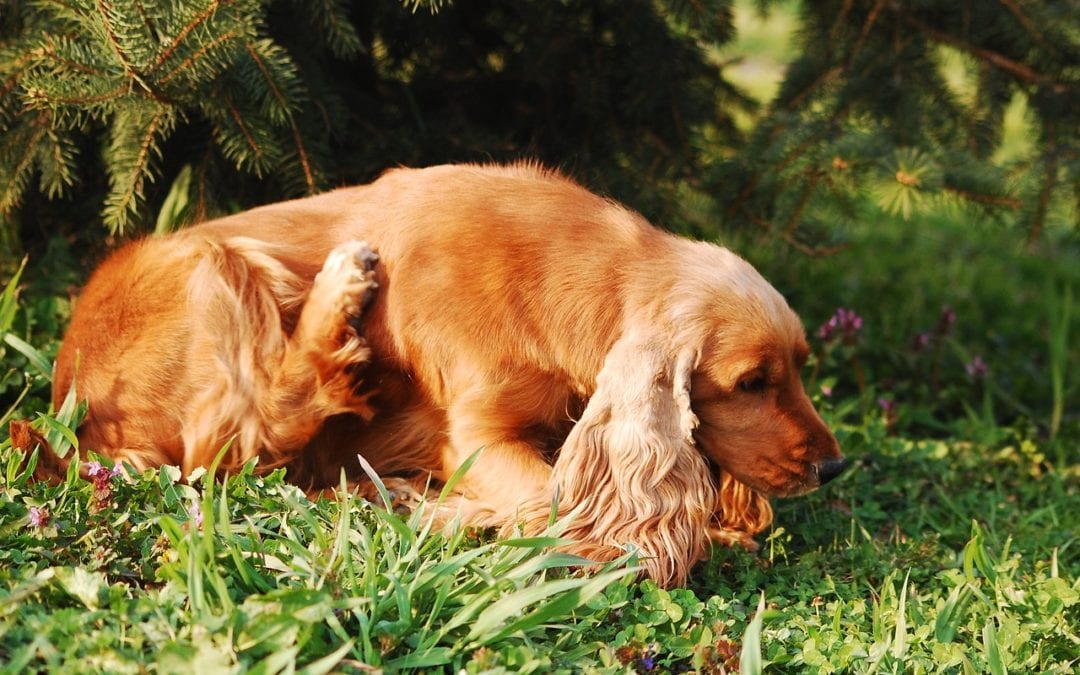Now that the weather is getting cooler, fleas are on the hunt for warm bodies and a way to get inside to survive the winter. Late fall and early winter is commonly the peak of new flea infestations. These tiny, blood-sucking insects can be a real nuisance. They can cause anemia, spread disease, cause tapeworm infections and cause severe skin problems for pets that are allergic to flea bites. With a little insight into their life cycle a flea infestation can be prevented.
Fleas are so tiny they can be hard to notice. A hungry adult flea will hunt for a warm pet for a blood meal. They may not stop at a front door. Fleas have been known to get through screen windows or ride into homes on peoples clothing. About 24 hours after a female flea has fed on pet blood she will start laying eggs at the rate of 40 per day. She can live for up to 6 weeks continuing to lay eggs at this rate. The eggs fall off of pets and land in lawns, carpets, cracks in hardwood floors, upholstery and pet beds. The eggs hatch and the baby fleas go through their larval stage. If your house or yard is at a comfy temperature then this may take as little as 9 days. Then the larvae develop cocoons which are sticky. They love to stick around under the carpets. In their protected cocoon they can live for months and monitor for fluctuations in carbon monoxide levels, light and movement to know that there is a dog or cat near. As soon as they get the signal they emerge as hungry adult fleas and they will stop at nothing during their hunt for blood. This whole cycle can take less than 3 weeks. With some basic math it is easy to see how a few fleas can turn into a huge infestation during the course of one summer. Once you have a flea infestation, the fleas may not stop at just biting the pets. Hungry fleas will also feed on humans, causing a very itchy rash that may require medical attention.
The first key to protecting your pet is vigilance. Know that fleas are small and hard to spot. Sometimes the only sign of them being there is the poop they leave behind in your pet’s fur. A flea comb is a great tool to use routinely on your pet to look for signs of fleas and flea poop. Some pets are very adept at grooming, especially if they are itchy and have a rash, they may clean away all of the evidence before it can be found. Any pet with a skin rash should be treated for fleas as directed by their veterinarian. These days there are some really effective products that kill over 99% of fleas very well. Just using the right product, carefully and routinely, is usually all that is needed to prevent flea infestation. The products that work the best can fluctuate from year to year as flea populations change. Your veterinarian can tell you what will work best for your pet. Always get the OK from your veterinarian before trying a flea product – there are some flea products sold over the counter that are actually very toxic and not recommended. These days your veterinarian can provide you with several options for flea products to fit your lifestyle, including collars, spot-on products and chew treats.

